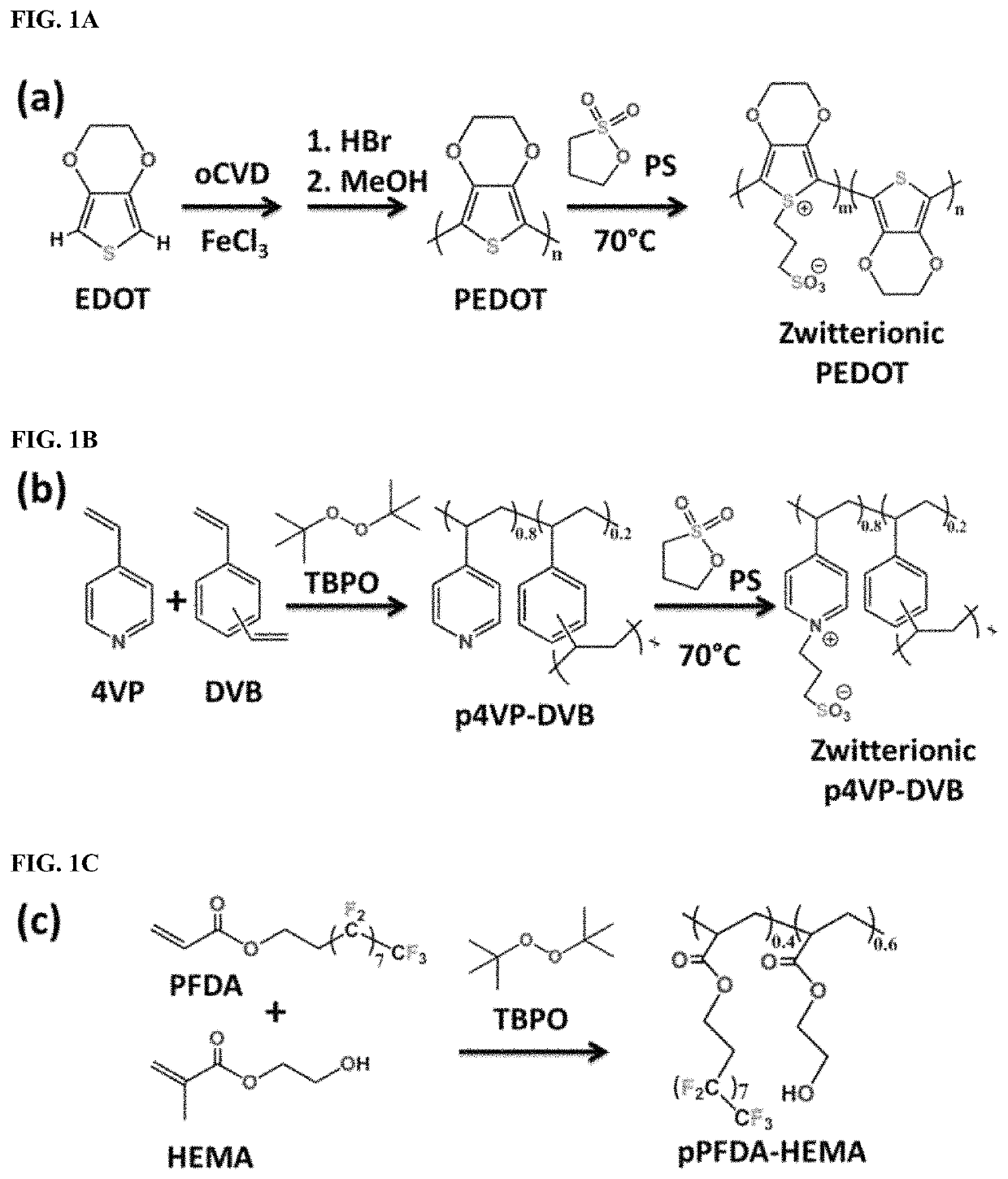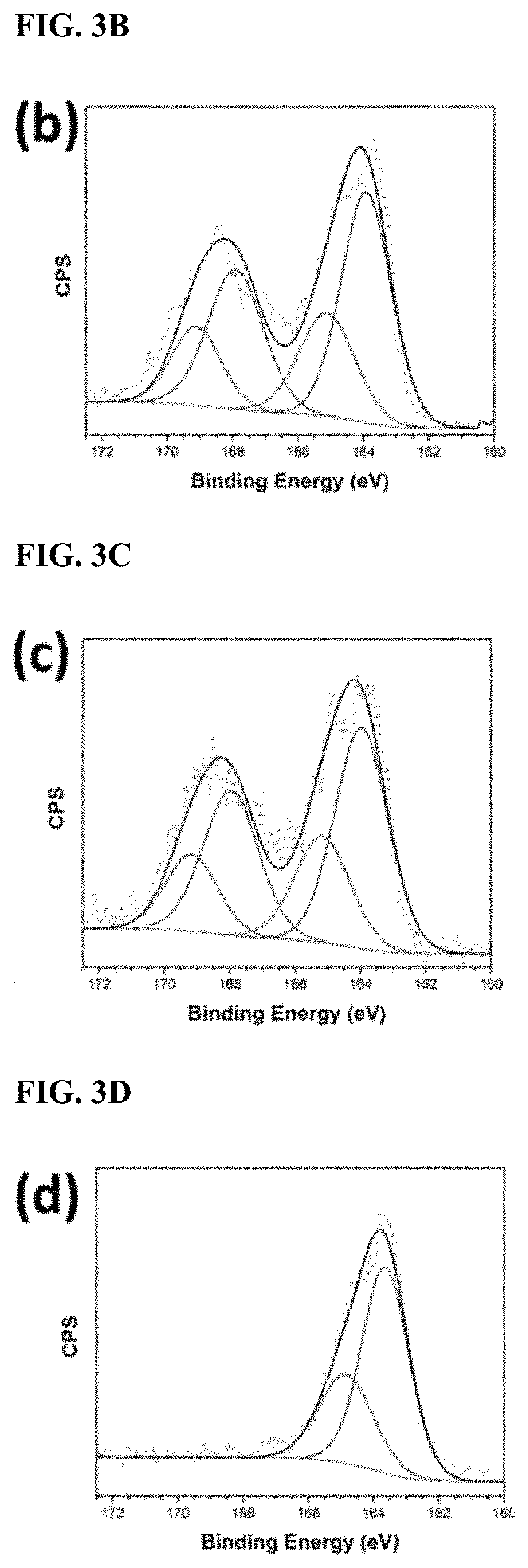Ultrathin, conductive and fouling-resistant zwitterionic polymer films
a technology of conductive and fouling resistance and polymer film, which is applied in the direction of membranes, specific water treatment objectives, reverse osmosis, etc., can solve the problems of affecting the separation capability of the membrane, affecting the performance of the device involving the submerged surface, and affecting the performance of the devi
- Summary
- Abstract
- Description
- Claims
- Application Information
AI Technical Summary
Benefits of technology
Problems solved by technology
Method used
Image
Examples
example 1
Preparation of Exemplary Films of the Disclosure
Synthesis of PEDOT Derived Zwitterionic Films
[0241]Poly(3,4-ethylenedioxythiophene) (PEDOT) was synthesized via oxidative chemical vapor deposition (oCVD) during which the glass substrates (or silicon substrates) were simultaneously exposed to vapors of 3,4-ethylenedioxythiophene (EDOT) monomer (Sigma Aldrich, 97%) and iron chloride (FeCl3) oxidant (Sigma Aldrich, 99.99%). A schematic is shown in FIG. 1A. The evaporated monomer was delivered at the rate of ˜5 sccm into the vacuum chamber, where the oxidant was evaporated from a resistively heated crucible at 100-165° C. The substrate temperature was 140° C. and the chamber pressure during the deposition was kept at ˜0.1 mTorr. Following the deposition, the PEDOT films were rinsed in 5 M hydrobromic acid (HBr) (prepared by diluting 48% HBr, Sigma Aldrich, with deionized water) for 20 mins to remove all the residual oxidant, then rinsed in methanol (BDH, ACS grade) and dried in air. PEDO...
example 2
Characterization of Exemplary Films of the Disclosure
Characterization of Physiochemical Properties
[0243]Fourier transform infrared spectroscopy (FTIR) (Thermo scientific Nicolet iS50, with a mercury cadmium tellurium (MCT) detector and a moderate intensity attenuator, Thermo Fisher Scientific, Waltham, Mass.) was used for analyzing the chemical composition of CVD synthesized polymeric films and their derivatives. In a typical measurement, a spectrum of CVD polymer coated Si wafer was first collected. The coating was then removed from the Si wafer to obtain a second spectrum of the bare Si wafer, which was employed as the background for processing the spectra for CVD polymers. The spectra were averaged over 256 scans to improve the signal-to-noise ratio, and analyzed by OMNIC software package.
[0244]X-ray photoelectron spectroscopy (XPS) was performed on a Surface Science Instruments SSX-100 spectrometer equipped with a monochromatic Al Ka source at 1486.6 eV and operated at 150 W. Th...
PUM
| Property | Measurement | Unit |
|---|---|---|
| collection angle | aaaaa | aaaaa |
| collection angle | aaaaa | aaaaa |
| temperature | aaaaa | aaaaa |
Abstract
Description
Claims
Application Information
 Login to View More
Login to View More - R&D
- Intellectual Property
- Life Sciences
- Materials
- Tech Scout
- Unparalleled Data Quality
- Higher Quality Content
- 60% Fewer Hallucinations
Browse by: Latest US Patents, China's latest patents, Technical Efficacy Thesaurus, Application Domain, Technology Topic, Popular Technical Reports.
© 2025 PatSnap. All rights reserved.Legal|Privacy policy|Modern Slavery Act Transparency Statement|Sitemap|About US| Contact US: help@patsnap.com



